May 2021
The Fells Point Neighborhood
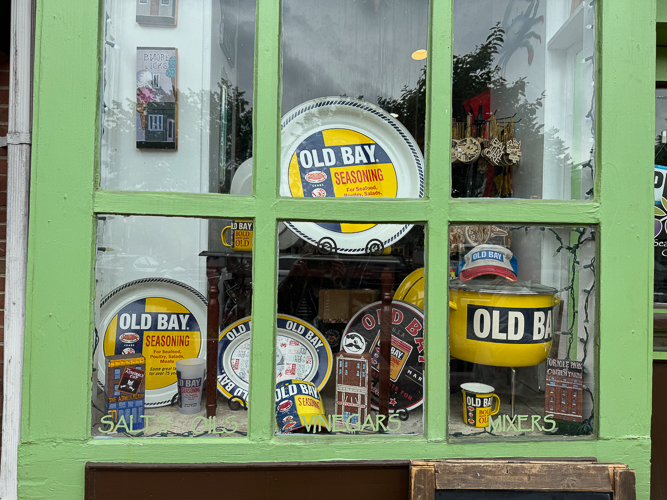
The Fells Point Neighborhood
Fell’s Point is one of Baltimore’s oldest neighborhoods and was once a bustling shipbuilding port. It was home to jazz singer Billie Holiday and abolitionist Frederick Douglass. Today, there are more bars in Fells Point than in any other part of Baltimore, and many streets are still lined with Belgian Block.

The oldest continuously open bar in Baltimore opened in 1775. It was the last destination before the mysterious death of the author Edgar Allan Poe.
Fells Point was established around 1763 along the north shore of the Baltimore Harbor and the Northwest Branch of the Patapsco River.
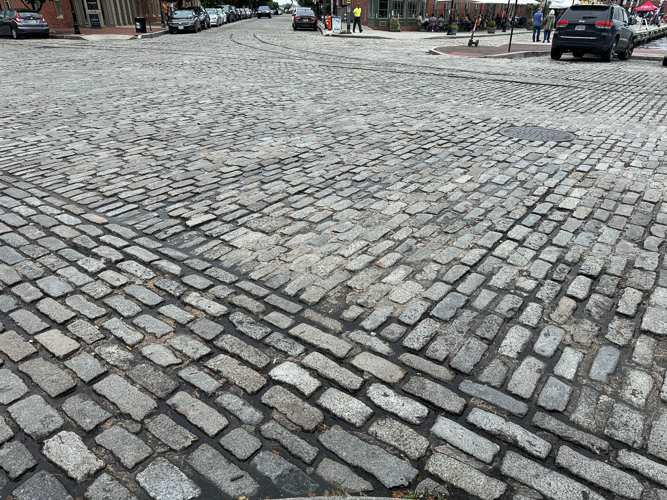
Belgian Block
This is Belgian Block. They are extremely large rectangular or sometimes cubical-shaped pieces of stone that can be upwards of 10 to 12” in length and height and are typically made of granite. It is thought that the term Belgian Block may have some historical connection to when European ships set sail from ports such as Antwerp, and large blocks of stone were used as ballast for ships that were too light.

Broadway Market
Broadway Market dates to 1786 and is one of the first public markets in Baltimore. It is one of six remaining public markets. In the early days, the market yards were equipped with stalls, barns, and a weighing platform to accommodate the livestock the farmers brought into town to sell.

A market stall number is still etched on the curb of the public square
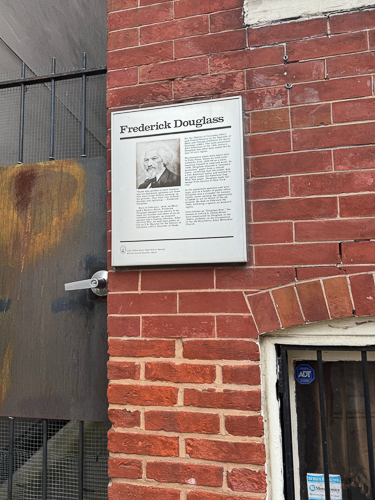
A home owned by Frederick Douglass
While still enslaved, Douglas was hired out to the shipbuilder John A. Robb as a caulker at the Fells Point shipyard. In his autobiography, Douglass recounts that, years earlier, the first time he had been sent to Baltimore, the Fells Point neighborhood was where he taught himself to read and write, copying the letters with which the men in the shipyard labeled boards and “making friends of all the little white boys whom I met in the street. As many of these as I could, I converted into teachers.
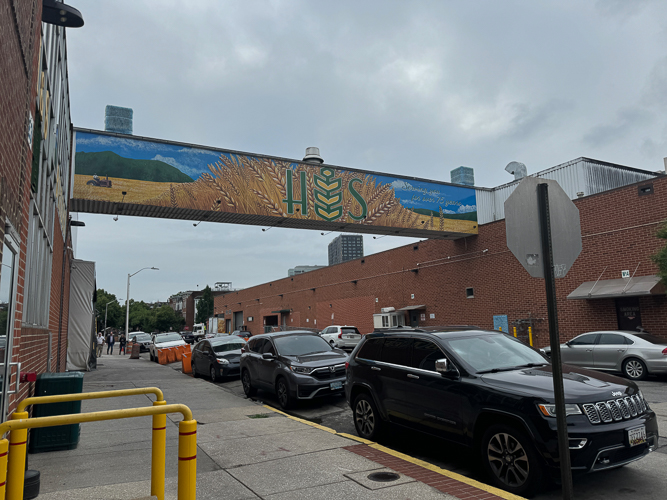
The H and S Bread Company
In 1943, H&S Bakery was founded by Greek immigrants Harry Tsakalos and Steve Paterakis in the basement of a Baltimore rowhome. Steve’s son, John Paterakis Sr., added H&S’s first Automatic Rolls plant in 1962 and, most importantly, made a handshake deal with Ray Kroc in 1965 – starting a long-term & successful relationship with McDonald’s.
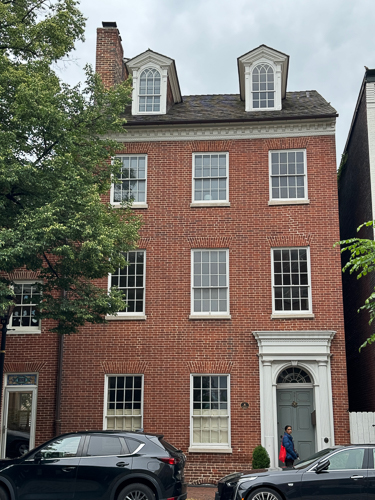
The Captain Steele House in Fells Point was built just after the Revolution. It has dormer windows and high-relief moldings characteristic of English Georgian architecture.
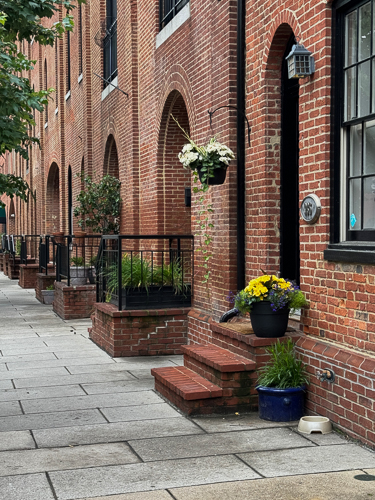
Welcoming sidewalk in Fells Point

An exuberance of color in Fells Point
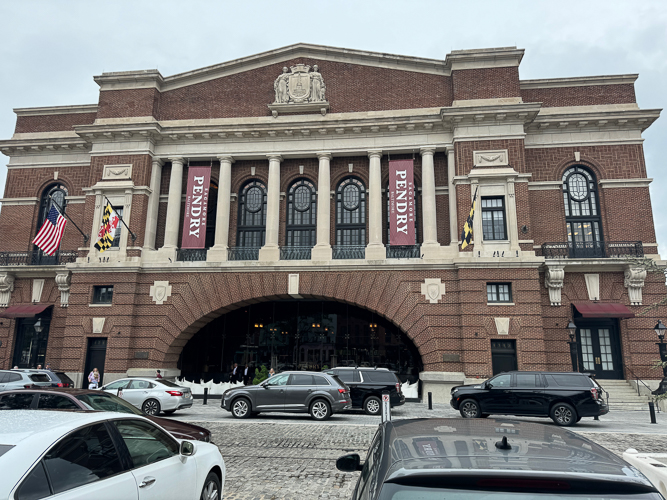
The Recreation Pier
When the Recreation Pier was first built in 1914, the brick-faced structure served as a landing point for the thousands of immigrants who made their way to the United States. Today it is the Sagamore Pendry a high-end hotel. A major piece of the pier’s restoration involved replacing the pilings that are driven underwater and into the Baltimore harbor bed, an expensive undertaking. The pier’s restoration required 200,000 worker hours, $250,000 worth of asbestos removal, and $300,000 worth of lead paint removal.
Sagamore Pendry Baltimore was designed by BHS architects and reopened in March 2017.
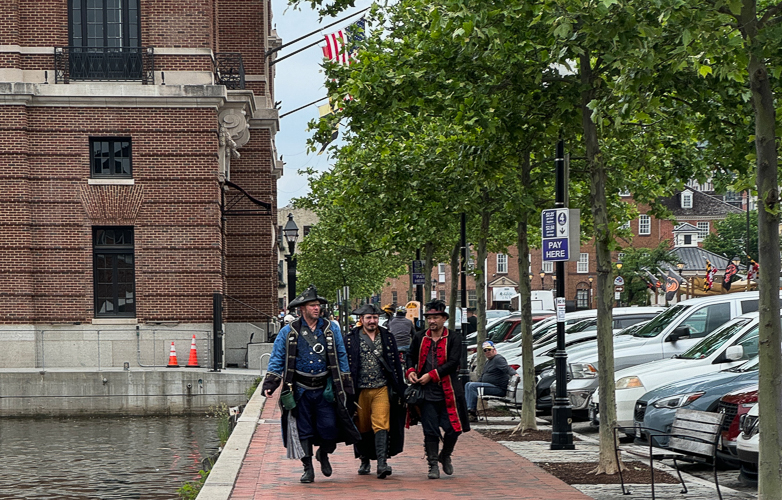
Pirates walking the shores of Fells Point